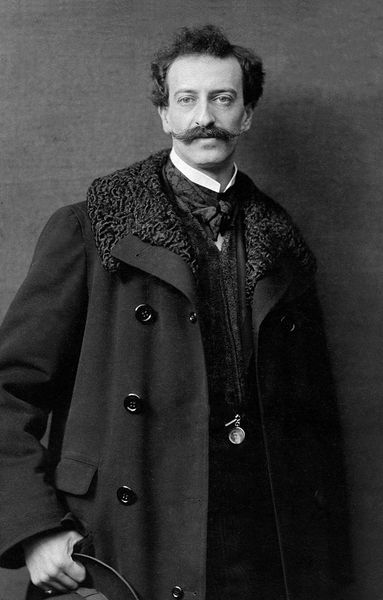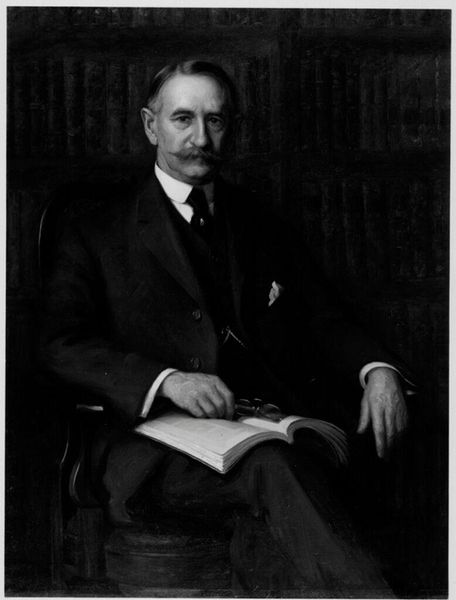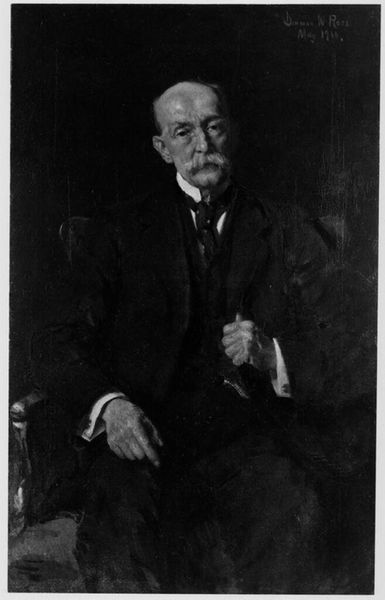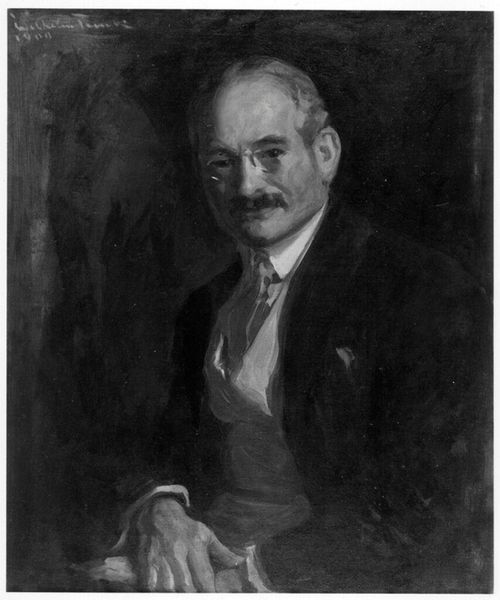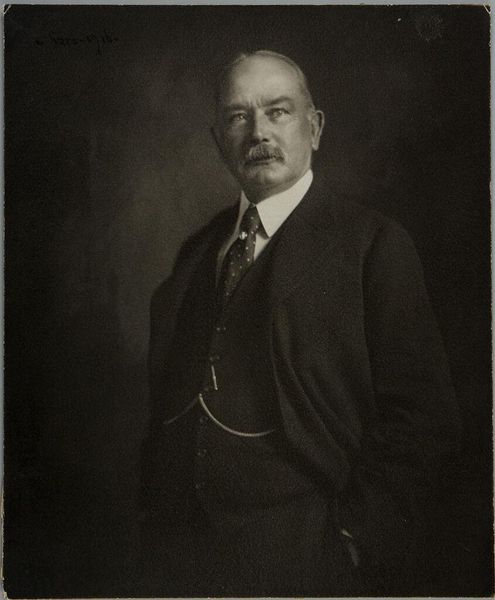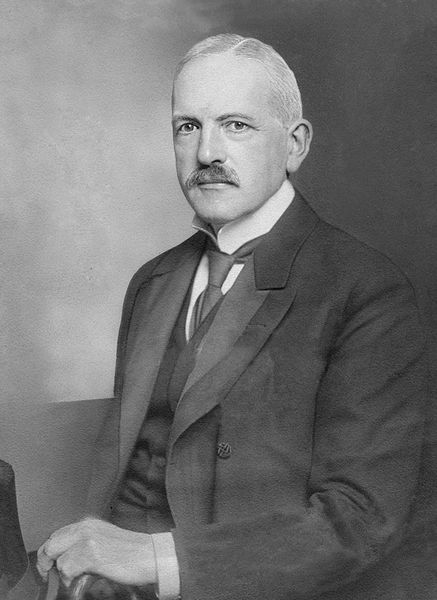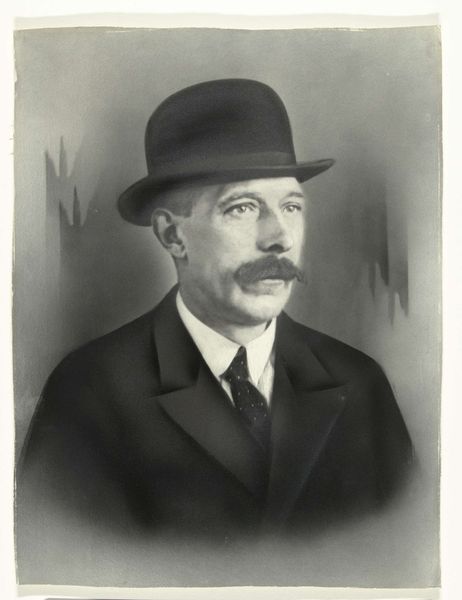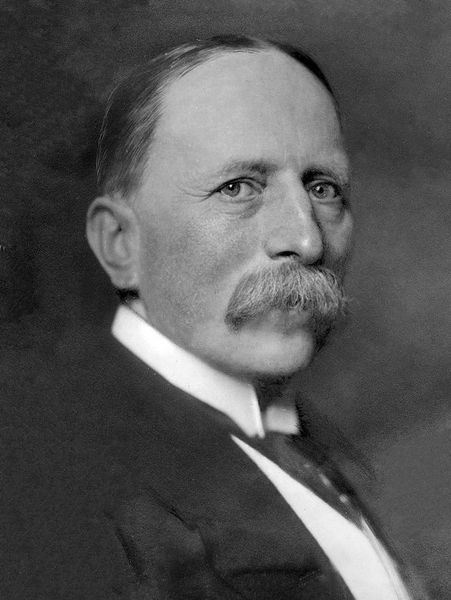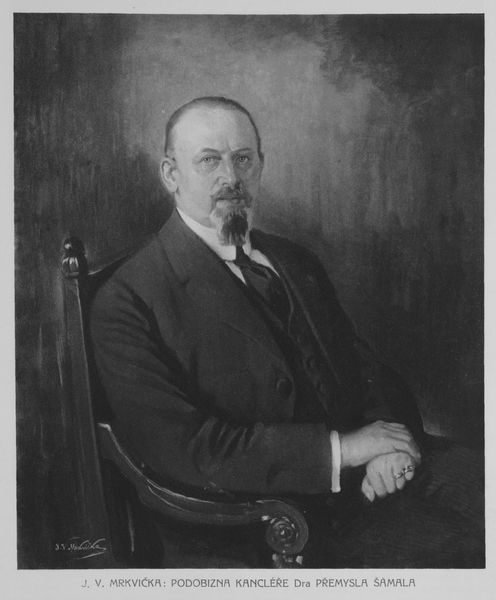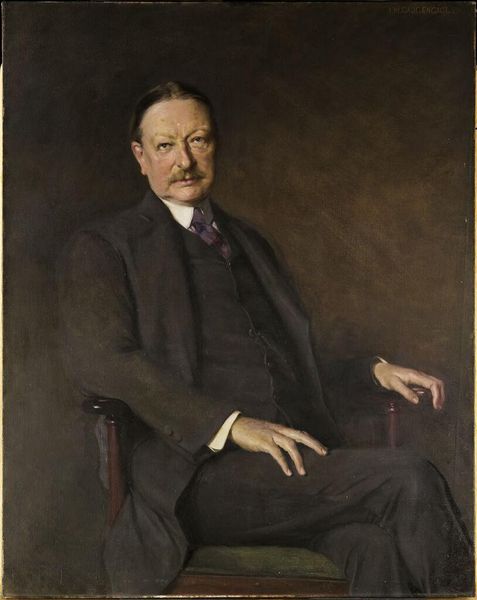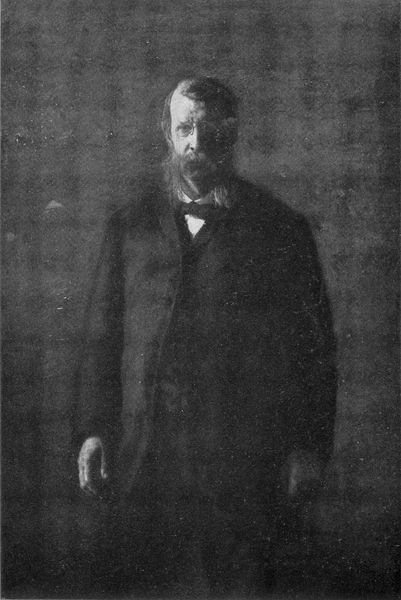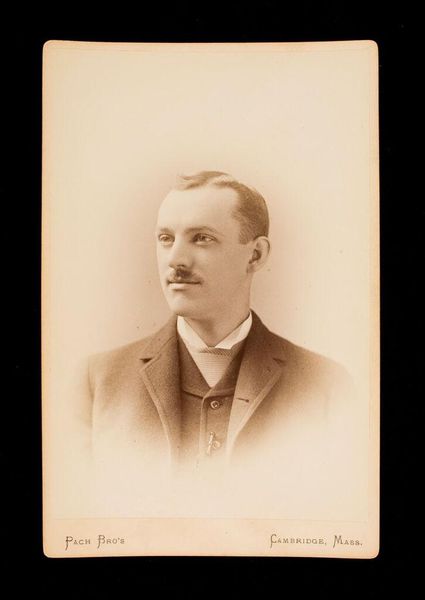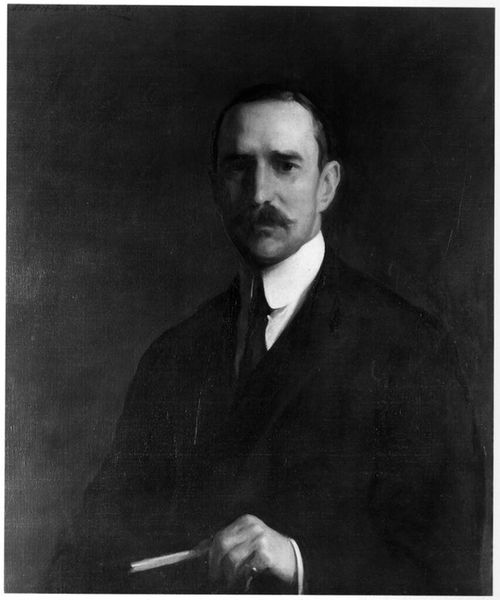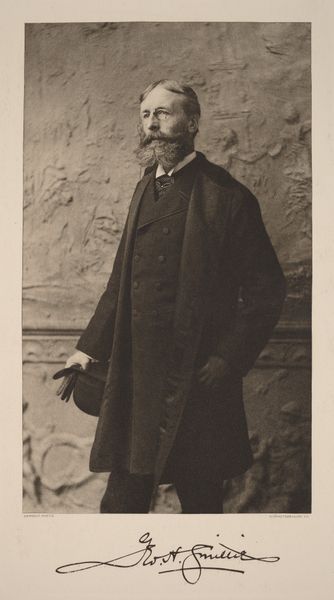
painting, oil-paint
#
portrait
#
low key portrait
#
portrait image
#
portrait
#
painting
#
oil-paint
#
portrait subject
#
male portrait
#
portrait reference
#
single portrait
#
facial portrait
#
modernism
#
realism
#
celebrity portrait
#
digital portrait
Dimensions: height 82.1 cm, width 72.2 cm, depth 7.5 cm
Copyright: Rijks Museum: Open Domain
Editor: So here we have Jan Veth's 1903 oil painting, "Johannes Martinus Messchaert (1857-1922). Zanger en zangpedagoog." It strikes me as a very dignified, almost somber portrait. What do you see in this piece? Curator: I see more than just a dignified portrait; I see a carefully constructed image reflecting the cultural anxieties of its time. Veth paints Messchaert, the singer, as a figure of established authority—note the hat, the confident gaze. But doesn’t it also feel like he's clinging to traditional ideas of masculinity and artistic merit in a world rapidly changing? How might this portrait be read in relation to the emerging avant-garde movements of the early 20th century? Editor: That’s interesting! I hadn't considered the tension with modernism. Is the low-key style also part of that clinging to tradition? Curator: Precisely. Consider how the stark lighting and realistic detail contrast with the bold colors and abstraction being explored by other artists at the time. It is, in essence, a defense of a particular kind of artistry—one rooted in skill, representation, and a very specific societal role for men of status. What kind of power dynamics are in play when an artist like Veth paints a singer like Messchaert? Editor: I see what you mean. It's not just a portrait; it's a statement. Curator: Exactly. And understanding that statement requires us to consider the painting’s social context. We're looking at art not as isolated aesthetic experience, but as a mirror reflecting societal values and anxieties, particularly surrounding gender, class, and artistic authority at the dawn of a new century. Editor: Thanks! I'll definitely look at portraits differently now. Curator: Hopefully seeing how portraits reinforce or challenge our understanding of ourselves in our world.
Comments
No comments
Be the first to comment and join the conversation on the ultimate creative platform.
